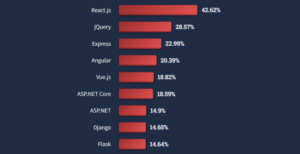
Repurposing video content for multiple platforms is a game changer in the digital landscape. It allows creators and brands to maximize their reach and engagement by tailoring their videos to meet the unique demands of various social media and web platforms. This approach not only saves time but also enhances the value of existing content, making it relevant across different audiences and formats.
In today’s fast-paced digital world, adapting video content to fit specific platform requirements can significantly boost visibility and engagement. By adjusting video length, format, and distribution strategies, brands can ensure their messages resonate with viewers, ultimately driving better results.
Repurposing Video Content Strategies

Repurposing video content is an effective way to extend the reach and lifespan of your media. By adapting your videos for various platforms, you can engage different audiences without the need to create entirely new content. This approach saves time, maximizes resources, and enhances brand visibility across multiple channels.To successfully repurpose video content, it is essential to understand the specific requirements and audience preferences of each platform.
Different social media platforms have varying formats, lengths, and style guidelines that need to be adhered to. For example, Instagram favors short, engaging clips, while YouTube supports longer, more in-depth videos. Customizing video length and format according to these specifications can dramatically improve viewer engagement and retention.
Adapting Video Content for Different Platforms
The adaptation of video content for various platforms involves several key strategies. Understanding these can help brands effectively reach diverse audiences.
- Optimizing Video Length: Each platform has its ideal video duration. For instance, TikTok videos are typically under 60 seconds, while YouTube allows longer formats. Brands can take longer content and create shorter segments for quick consumption on platforms like Instagram or TikTok.
- Changing Aspect Ratios: Different platforms require different aspect ratios. For instance, Instagram Stories utilize a 9:16 format, while Facebook videos are often in a 16:9 format. Brands should adjust their video dimensions accordingly to ensure optimal viewing.
- Creating Platform-Specific Edits: Tailoring content for specific platforms can significantly enhance engagement. For example, a tutorial video can be repurposed into a series of bite-sized clips for Instagram, featuring key takeaways and highlights, making it more digestible for viewers.
- Adding Captions and Graphics: Consider that many users browse social media without sound. Adding captions and relevant graphics can keep your audience engaged even when the audio is off. This is especially important on platforms like Facebook and Instagram.
Successful examples of brands repurposing video content can be seen across various social media platforms. For instance, Nike often takes a central campaign video and extracts shorter clips to share on Instagram, enhancing user engagement while promoting the same message. Another example is BuzzFeed, which repurposes their video content into snackable formats for platforms like Snapchat and TikTok, providing a fresh take that appeals to younger audiences while maintaining the essence of the original content.
These strategies exemplify how brands can effectively maximize their media investment through thoughtful repurposing.
Integrating Video Marketing with and SEM
Video marketing is an essential component of a comprehensive digital strategy, especially when integrated with (Search Engine Optimization) and SEM (Search Engine Marketing). By leveraging video content, businesses can not only enhance their visibility on search engines but also attract more qualified traffic through paid advertising channels. Incorporating effective video marketing strategies increases engagement and drives conversions, making it a powerful tool in today’s digital landscape.Optimizing video content for search engines is crucial to improving visibility and rankings.
Search engines like Google prioritize content that keeps users engaged, and videos tend to do just that. To ensure your videos are seen, consider the following practices that enhance and SEM efforts.
Strategies for Improving Search Engine Rankings with Video
The integration of video content into your online strategy can significantly impact search engine rankings. Here are essential strategies to consider:
- Embed Videos on Relevant Pages: Placing videos on your website, especially on landing pages and blog posts, can increase dwell time—an important ranking factor. When users spend more time on your site, search engines recognize this as a signal of quality content.
- Utilize Video Sitemaps: Submitting a video sitemap to search engines can help them index your video content more effectively. A video sitemap provides metadata about your video, such as title, description, and thumbnail, improving discoverability.
- Leverage Transcripts: Including transcripts of your video content can enhance by providing additional text for search engines to crawl. Transcripts also make your content accessible to a broader audience.
Best Practices for Optimizing Video Titles, Descriptions, and Tags
Optimizing your video’s metadata is essential for improving visibility in search results. The following best practices will guide you in crafting effective titles, descriptions, and tags:
- Craft Descriptive Titles: Use clear and compelling titles that incorporate relevant s. Titles should be engaging and reflect the video’s content while aiming for a balance between clarity and intrigue.
- Write Informative Descriptions: The description should provide a succinct overview of the video, including relevant s. Aim for at least 250 words, incorporating links to your website or other resources to enhance user engagement.
- Utilize Relevant Tags: Tags help categorize your video and assist search engines in understanding its context. Use a mix of broad and specific tags to improve searchability.
Incorporating Strong Call-to-Actions in Videos
A compelling call-to-action (CTA) is vital for driving traffic to your website. The following methods can enhance the effectiveness of CTAs in your video content:
- Include Clear CTAs at Key Moments: Position your CTAs strategically throughout the video, especially at the beginning and end. This increases the chances of viewers acting on your request.
- Use Visual and Verbal Cues: Combine visual elements like on-screen text or graphics with verbal prompts to reinforce your CTA. This dual approach caters to different learning styles and enhances retention.
- Link to Relevant Landing Pages: Ensure that your CTAs direct viewers to relevant landing pages. This not only improves user experience but also increases the likelihood of conversion.
Integrating video marketing with and SEM creates a synergistic effect that maximizes visibility and engagement, ultimately driving traffic and conversions.
Leveraging Social Media for Video Distribution

Distributing repurposed video content across social media platforms is essential for maximizing reach and engagement. Each platform has its unique audience and characteristics, so tailoring your approach accordingly is crucial. By strategically utilizing social media, brands can enhance visibility and drive traffic to their primary content.Understanding the nuances of each platform can inform a robust distribution strategy. For example, short-form videos perform well on platforms like TikTok and Instagram, while longer videos may be more suitable for Facebook and YouTube.
Here’s a suggested plan for distributing repurposed video content:
Distribution Plan Across Social Networks
Developing a comprehensive distribution plan enhances engagement and ensures that video content reaches the intended audience effectively. Consider the following elements for your plan:
- Identify Target Audience: Understand the demographics and preferences of users on each platform to tailor content effectively.
- Choose the Right Platforms: Select platforms based on where your audience is most active. For example, use LinkedIn for B2B content and Instagram for lifestyle content.
- Customize Content for Each Platform: Edit videos to fit the specifications and best practices of each platform, such as length, format, and style.
- Utilize Stories and Live Features: Engage audiences through real-time interactions via live videos or stories, which are prominent features across platforms like Instagram and Facebook.
- Leverage Hashtags and Trends: Use relevant hashtags and participate in trending topics to enhance discoverability and reach.
Timing is a crucial factor that can significantly influence audience engagement. Here’s how to effectively schedule video posts:
Scheduling and Timing for Engagement
Maximizing audience engagement requires a strategic approach to scheduling. Identifying peak times when your audience is most active can enhance visibility and interaction. Consider these guidelines:
- Analyze Audience Insights: Use analytics tools to understand when your followers are online and most engaged with your content.
- Optimal Posting Times: Research suggests that posting during lunch hours or evenings can yield better engagement, depending on your target demographic.
- A/B Testing: Experiment with different posting times to gather data on when your specific audience engages most, refining your approach over time.
Engagement is not merely about posting; it involves promoting visibility through social bookmarking.
Role of Social Bookmarking in Video Promotion
Social bookmarking offers a way to increase the reach of video content beyond the immediate followers. Here’s how it functions as an effective promotion strategy:
- Increased Visibility: By bookmarking videos on platforms like Reddit, Pinterest, or Digg, you enhance the likelihood of reaching a broader audience.
- Community Engagement: These platforms allow users to share, comment, and discuss, fostering a community around your video content.
- Link Building: Social bookmarking can create valuable backlinks, improving your website’s and driving traffic from external sources.
Utilizing social media for video distribution is a powerful way to amplify your content’s reach, ensuring it resonates with the right audience at the right time.
Last Recap
In conclusion, mastering the art of repurposing video content for multiple platforms is essential for anyone looking to enhance their digital marketing strategy. By understanding the nuances of each platform and applying effective techniques, brands can not only extend the life of their content but also foster deeper connections with their audience. Embrace these strategies to stay ahead in the ever-evolving video marketing landscape.
Query Resolution
What does repurposing video content mean?
Repurposing video content refers to adapting or modifying existing videos to suit different platforms or formats for broader reach and engagement.
How can I determine the best length for my videos on different platforms?
Each platform has its optimal video length; for instance, Instagram prefers shorter clips, while YouTube can accommodate longer formats. Researching platform guidelines can help you tailor accordingly.
What types of videos can be repurposed?
Nearly any video can be repurposed, including tutorials, webinars, interviews, and promotional videos, by adjusting them for different contexts and audiences.
How does video content improve ?
Video content can improve by increasing dwell time on pages, enhancing user engagement, and providing rich media that search engines favor, leading to better rankings.
Can I use the same video across multiple platforms?
While you can use the same video, it’s often more effective to tweak the format, length, and messaging to align with the audience and expectations of each specific platform.





